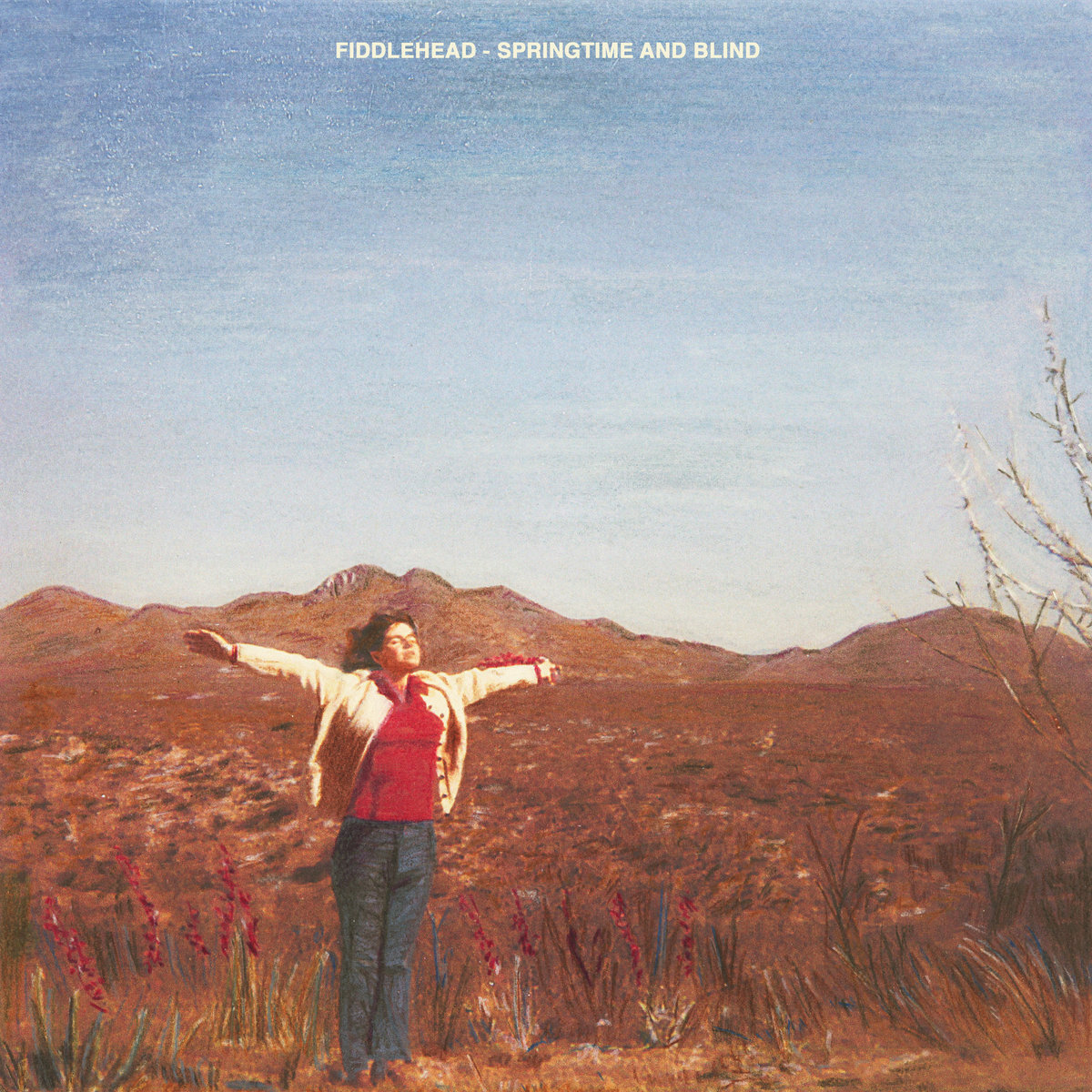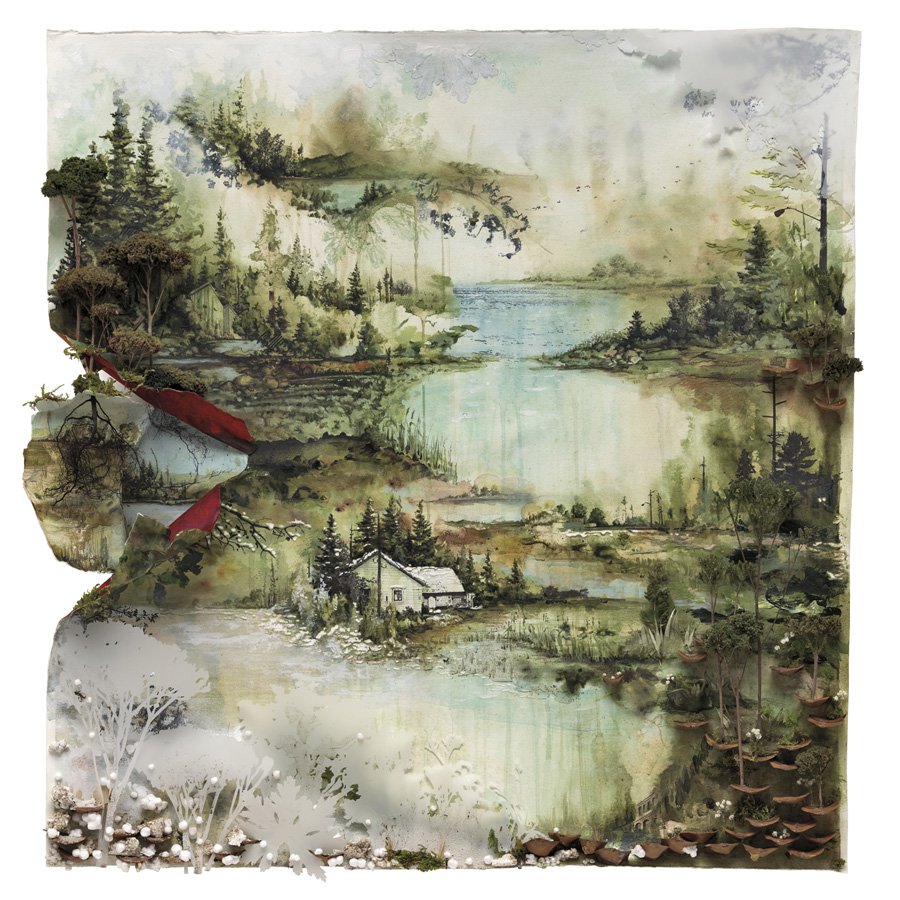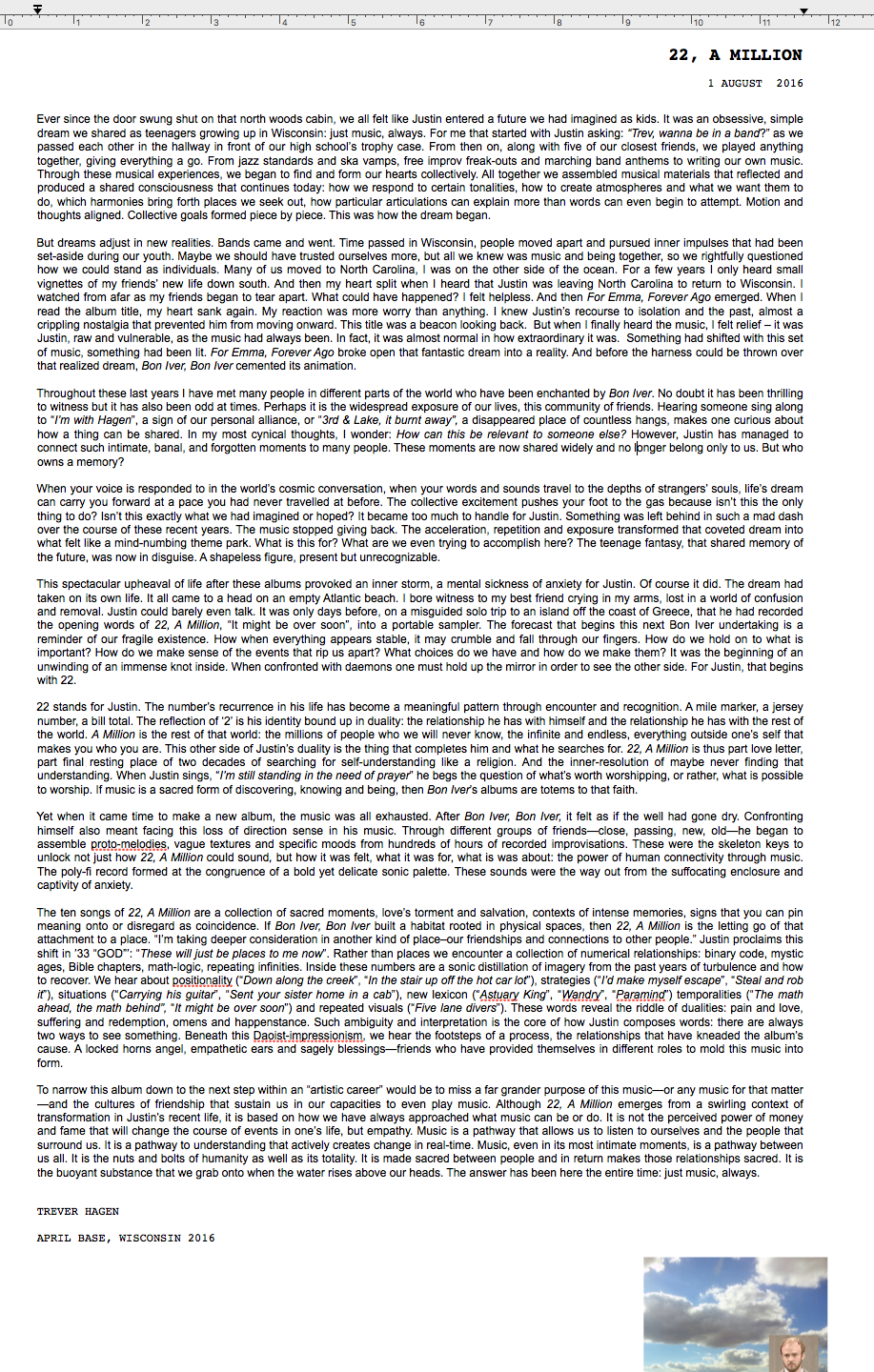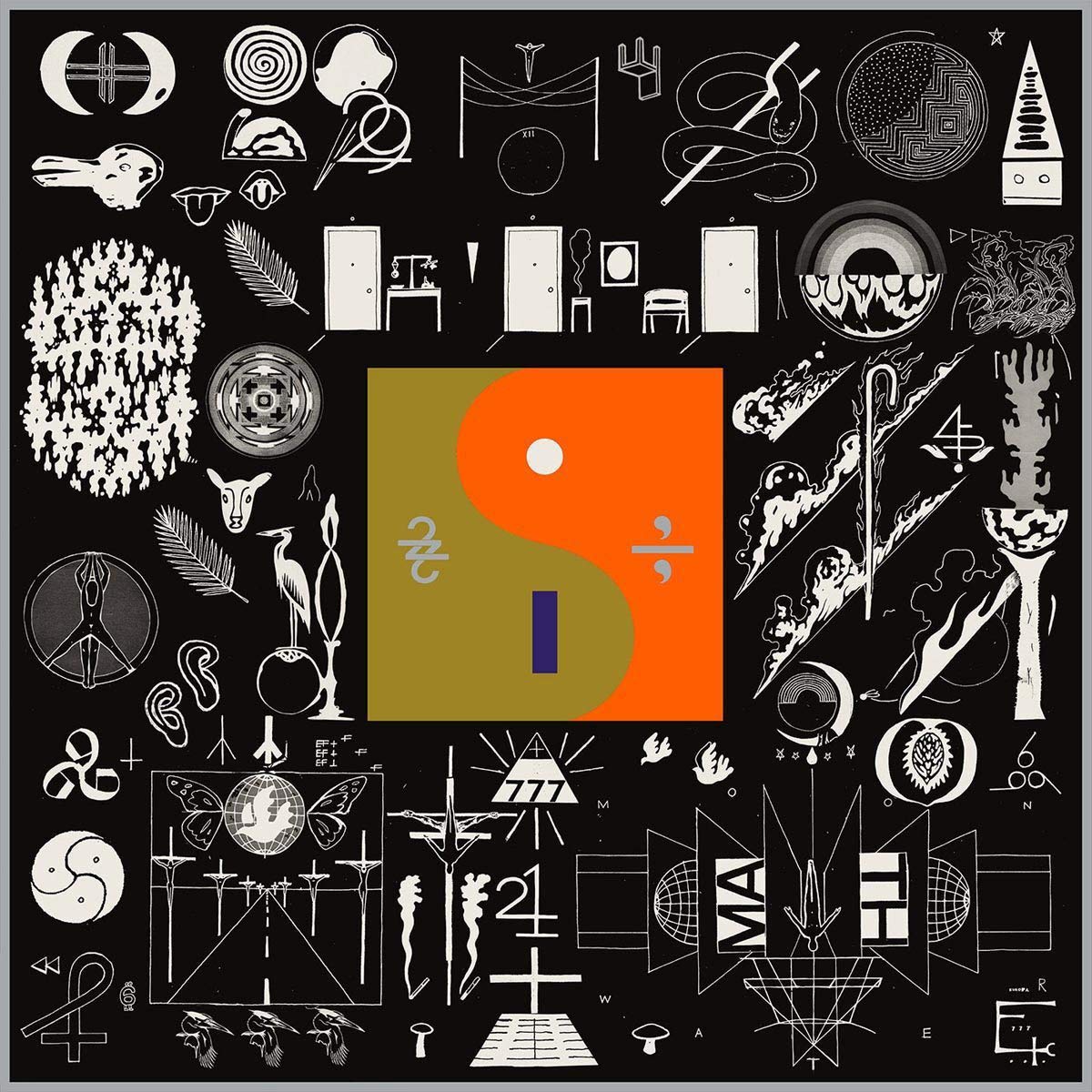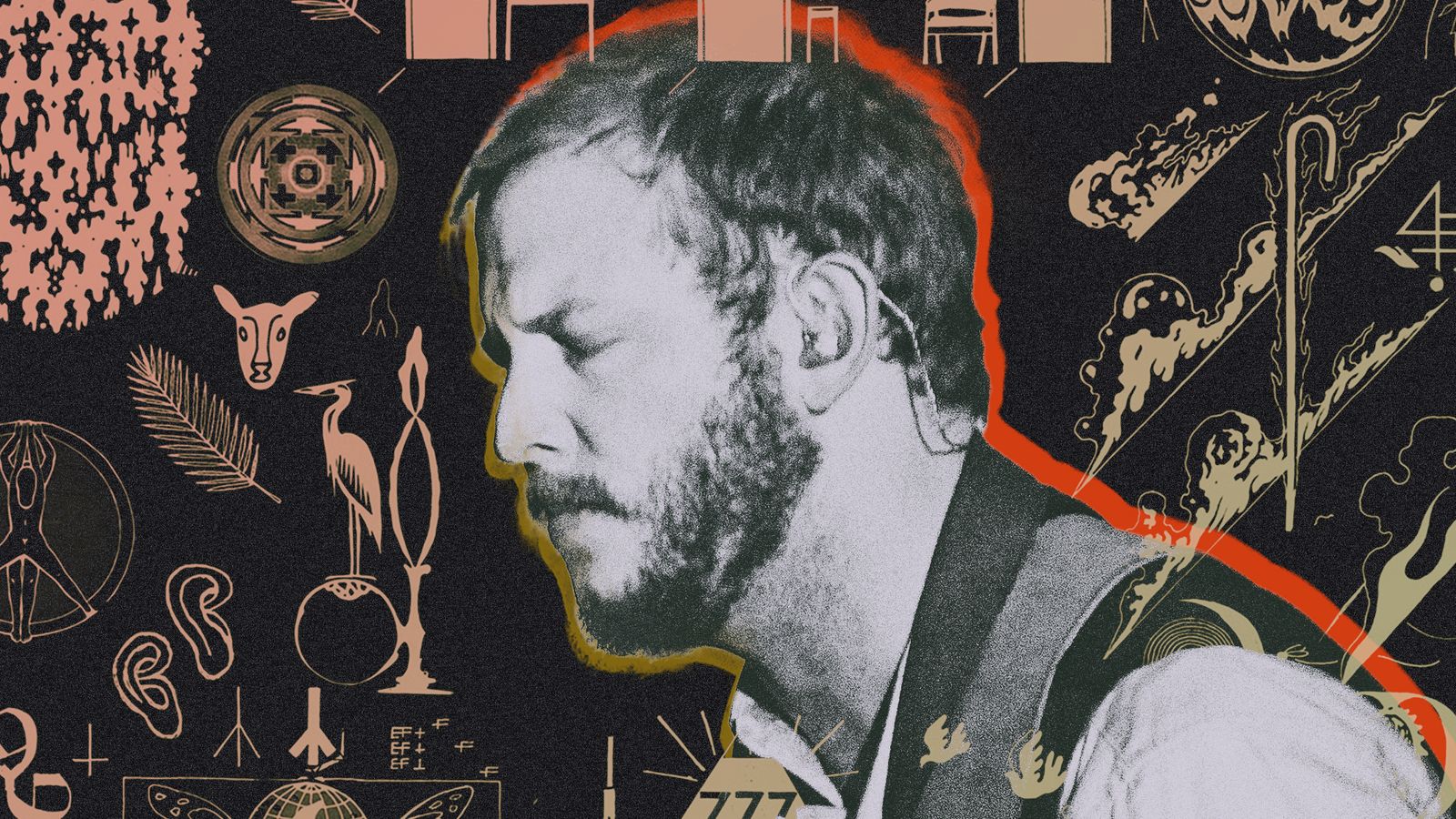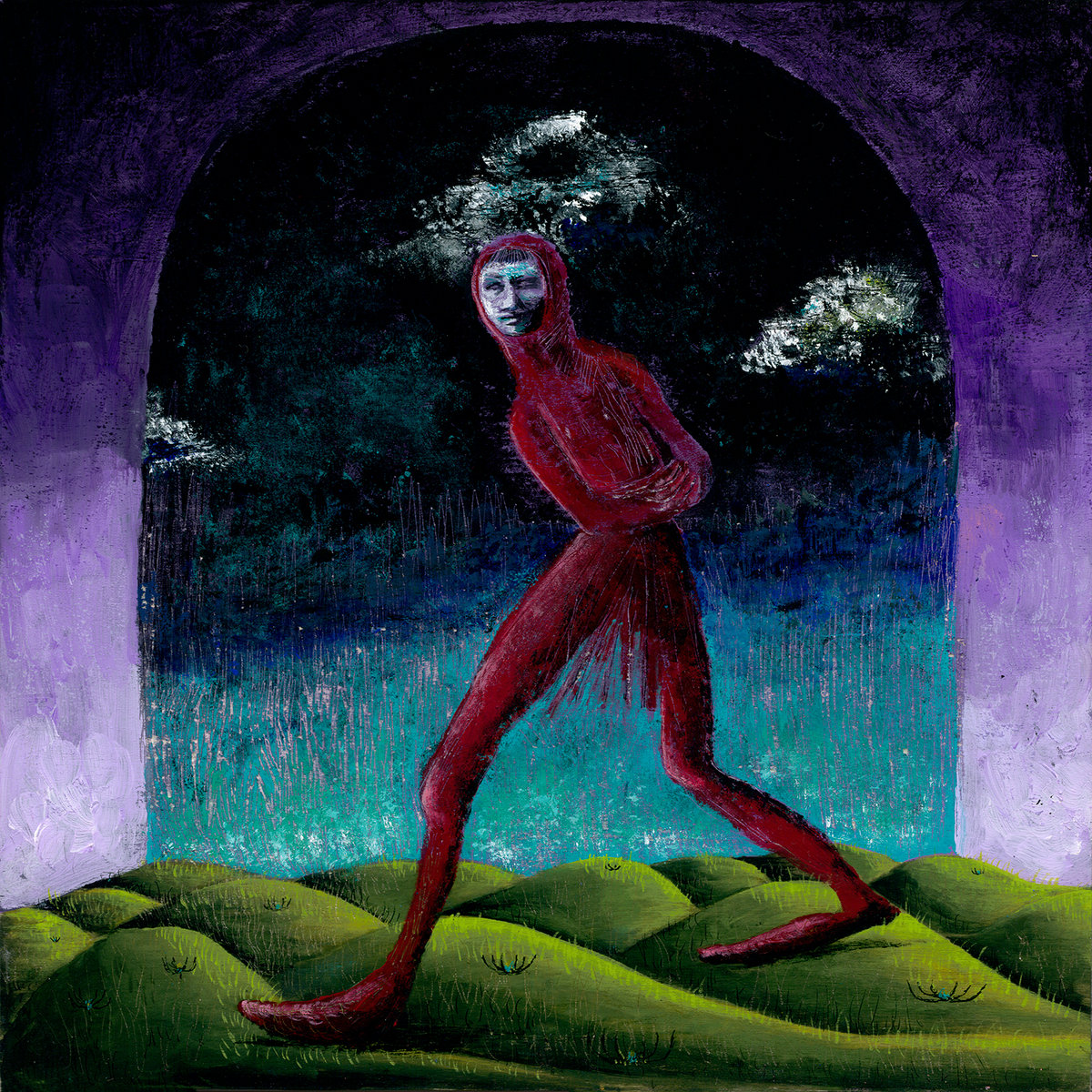How Spotify Made Music Disposable
/“You can’t record music every three or four years and think that’s going to be enough.” That was a sentence uttered in an interview earlier this year by Spotify CEO Daniel Ek. Widely derided by musicians and fans alike, this sound bite brought the “Streaming Discussion™” back to the forefront of music circles on places like Twitter and Reddit. While very few artists are happy with the financial arrangement between themselves and Spotify, this statement breathed new life into the unrest at the heart of this agreement. This suggestion of “just release more music” also brought to the forefront a litany of problems with the current economic model that platforms like Spotify and Apple Music have used to make millions off of the backs of artists.
It’s no secret that these services are notoriously stingy, offering up fractions of a penny per stream, but a less-discussed byproduct of this model is how it has literally devalued art and made music more disposable in the process.
The pandemic (and general state of the world) has obviously caused irreparable damage to our collective mental health and finances alike, but musicians have been hit especially hard. Robbed of the outlet of touring, this has been an unspeakably horrible year for musical artists. Album rollouts have been disrupted, tours have been postponed, and musicians are struggling to make ends meet more than ever before.
As creators flock to alternative sources of income to keep themselves afloat, the music industry as it stood at the beginning of the year will look very different than the one we see on the other side of this. Groups like Ratboys have taken up Twitch streaming; promoting their merch, prompting donations, and forging direct connections with fans along the way, all while promoting their (excellent) album that released in the weeks before quarantine. Bands like Mannequin Pussy, Prince Daddy, Glass Beach, and Diet Cig have taken to Patreon offering exclusive covers, merch discounts, and access to Dischord channels as benefits. On top of all this, Bandcamp has made a monthly tradition of eschewing their own cut of earnings, the end result being fans putting more than 20 million dollars directly into the pockets of artists, labels, and charities over the course of the summer.
Then you have Spotify, where it takes 229 streams to make one dollar. Their solution to this? Silly bands, it’s so obvious: simply make more music. Fill their playlists, servers, and coffers with your art if you want to be successful in the musical landscape of 2020.
Near the beginning of quarantine, Spotify gave artists the option to add “donation” buttons to their pages, which, on the surface, seems like a nice gesture, but ultimately proved to be an unsuccessful endeavor. It’s something Spotify can point to and say, “look, see, of course we care about the bands!” Then turn around months later and say things like, “maybe if you were shoveling more coal into our content furnace, you wouldn’t be struggling so much to make ends meet.”
I’ve written before about how “disposable” streaming services have made music, but never went into detail articulating what that meant to me, and this feels like the perfect time.
At the dawn of commercial music, you’d go to a store and buy your music in the form of a large piece of plastic that you’d bring home and listen to. As time went on, the size and shape of that plastic changed from vinyl to tape to cassette to CD, but the process always remained the same. Soon you could take your music on the go, listening in the car, on a boombox, a walkman, or a portable CD player. At this point, you might be thinking, ‘okay, yeah, thanks for mansplaining physical media to me,’ but this process actually had an impact on how we viewed and interacted with the music itself.
Due to the financial (and physical) investment you just made, when you bought an album like this, you were going to listen to it, and you were going to listen to it a lot. At a certain point, it almost didn’t even matter if the record was bad or not, because you just sunk $20 into it, and now it’s going to be on your shelf forever. You were going to listen to it over and over and over again.
My first collection of childhood CDs was pretty appalling. It ranged from stuff like Sum 41, Good Charlotte, and Simple Plan to Eiffel 65, Aaron Carter, and the Baha Men. Hell, I owned multiple Baha Men CDs. You can probably think of one Baha Men song off the top of your head, but I listened to the deep cuts because I had no other alternatives. If “Who Let The Dogs Out” released in 2020, it would go viral, get the band millions of streams, and then fade out in a month or two. People wouldn’t listen to that song and think, ‘Gee, I wonder what else these guys have to offer’ and then jump into the rest of their discography.
Even in the mid-2000s, once iPods and mp3 players became widely accessible, your digital music library still had some semblance of connection to who you were as a person. The songs sitting in your iTunes library were all files that you ripped from your own CD collection, bought from Apple, were sent by friends, or obtained through more… nefarious means. It felt like every album, and sometimes even every song, had a story and a purpose. Everything was in its right place, even if it was just a 5mb file sitting somewhere deep in the tangled web of folders on your hard drive.
Now, streaming services have done a lot of good. Having a majority of this century’s auditory output one scroll away is an unspeakable achievement, but it’s a double-edged sword. The flip side of this is that it leads artists to game streaming numbers, create insanely bloated tracklists, and beg fans to fake streams. Those aren’t telltale signs of a sustainable business model.
The byproduct of this process for fans is that music is not held with the same reverence when viewed through this platform’s lens. If you’re a capital “M” Music Fan, you’re likely following hundreds, if not thousands of artists from different genres and backgrounds. This is rewarding because it means you have something new to listen to every Friday, probably too much in fact. When there are five to ten new releases to listen to every week, things become buried so quickly that you might not even realize it.
An artist as big as Taylor Swift can now surprise release an album to critical acclaim and fan approval. It can break records, dominate social media feeds, and feel like a genuine event, only for it to fade from all memory not even a month later. I enjoy folklore, but it’s no longer part of the “culture” as of September 2020, so therefore I’m not thinking of it and not streaming it unless I scroll far back enough in my library to see it.
You could argue that’s just because it’s a bad album or otherwise unmemorable, but I’ve found this happening with every band, even ones I love dearly. Earlier this year, The Wonder Years, my favorite band of all time, released an acoustic EP that I spun for weeks and weeks but haven’t listened to more than twice this summer. That would have been unthinkable in the era of physical media or iTunes.
I think the problem here is two-fold. First, it’s platforms like Spotify who capitalize on the hype of something like folklore to generate more users, streams, and engagement for their platforms. Second, I think we’re experiencing an era of unprecedented acceleration in every facet of our lives. Perhaps a product of being sequestered in our homes for six months, our sense of time is skewed beyond repair. Things that happened mere days or weeks ago feel like months or years. How can I remember that an emo band I like put out a new EP two weeks ago when I’m busy filling my brain with social media rot, political discourse, and the horrors of the modern world.
I’m not begging for the return of the monoculture here, we’ll never return to an era where one band dominates the hearts, charts, and minds of millions of Americans, but it’s frustrating to watch an artistic medium that I love so dearly be treated as a passing fascination. Yeah, cool album you just put out, but what’s next? Artists release one thing, and fans are immediately clamoring for what’s next. It’s harder than ever to fully-digest art as we used to, and streaming platforms like Spotify aren’t helping.
This is the difference between sipping on a glass of finely-aged whiskey and slamming shots of bottom-shelf vodka…. Not to compare my childhood Baha Men CD to a bottle of whiskey, but you get the point. Dozens of albums came out this year that impacted me in the moment and then faded from my immediate consciousness over time simply because they became buried in the never-ending scroll of my digital streaming library. No matter how much I love an album, something will come out in the next few days that covers it up and pushes it further down the screen. I’ve learned to keep a database of new releases and a shortlist of my favorites, but that’s because I run a music blog, I am far from the average use case.
At the end of the day, most people are perfectly fine throwing on a Spotify-created playlist and vegging out to whatever the algorithm sees fit. I know active listening will never become a truly lost art, but I feel awful for artists who put hundreds of hours, thousands of dollars, and incalculable amounts of effort into their art only for it to be swallowed up by the streaming beast and fade into obscurity within weeks. This is yet another reason why vinyl and cassettes are enjoying a resurgence because people are hungry to reconnect with art.
Try as we might with petitions, outreach, and just roasting them on twitter, Spotify isn’t going to change any time soon. This is the norm for the foreseeable future, and it kind of sucks. It sucks for artists, and it sucks for fans. In fact, it sucks for everyone involved except the people at the top making millions of dollars off the blood, sweat, and tears of every artist at the bottom of the pyramid.
Streaming services treat music just like that; a service. Spotify will continue to exploit artists in order to fuel their machine, so as fans, we need to break out of that routine whenever possible. There’s no preciousness anymore unless you bring it, so let’s bring it. Go support an artist’s Patreon, go start a thread on twitter, go buy a shirt on Bandcamp, go post a makeup selfie inspired by a band’s album art. Those are only a few ways to connect with artists, but they go farther than you probably realize; you never know how much your support snowballs. As long as there are passionate fans supporting artists, sharing music, and spreading songs that they love, streaming services will never truly be able to make music disposable, try as they might.






